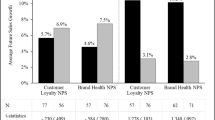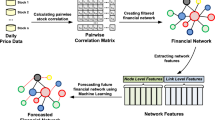Abstract
In the presence of transaction cost, the ‘perfect’ timing strategy which holds stocks in a period with positive excess return and holds cash in a period with negative excess return is not necessarily perfect. Using the optimal growth criterion, this paper derives the truly perfect timing strategy which can achieve the maximum long term growth. It is found that such a perfect timing strategy can achieve a much higher annual return than the ‘perfect’ timing strategy under reasonable transaction cost. Also, it can achieve a return of over 80% when a review period is as short as a day and when transaction cost is low. Using the truly perfect timing strategy as a benchmark, the likely gains from imperfect timing can be more accurately assessed. For a less frequent review schedule, a market timer needs a very high correct prediction probability in order to be at par with the buy-and-hold strategy. However, the needed correct prediction probability is much less when the review schedule is more frequent. Also, the correct prediction probability needed to be at par with the buy-and-hold strategy increases with the transaction cost.
Similar content being viewed by others
References
Allen, F. and R. Karjalainen, “Using Genetic Algorithms to Find Technical Trading Rules.” Journal of Financial Economics 51, 245-271 (1999).
Bauer, R. J., Jr. Genetic Algorithms and Investment Strategies, John Wiley & Sons, Inc., 1994.
Beebower, G. L. and A. P. Varikooty, “Measuring Market Timing Strategies.” Financial Analysts Journal 47(6), 78-84 (1991).
Benning, C. J. “Prediction Skills of Real-Work Market Timers.” The Journal of Portfolio Management 23(2), 55-65 (1997).
Chua, J. H., R. S. Woodward and E. C. To, “Potential Gains from Stock Market Timing in Canada.” Financial Analysts Journal Sept./Oct., 50-56 (1987).
Cox, J. C. and C. Huang, “Optimum Consumption and Portfolio Policies When Asset Prices Follow a Diffusion Process.” Journal of Economic Theory 49, 33-83 (1989).
Droms, W. G. “Market Timing as an Investment Policy.” Financial Analysts Journal 45(1), 73-77 (1989).
Fuller, T. J. and J. L. Kling, “Is The Stock Market Predictable?” The Journal of Portfolio Management Summer, 28-36 (1990)
Hankansson, N. and W. T. Ziemba, “Capital Growth Theory,” in R. A. Jarrow, V. Maksimovic and W. T. Ziemba (Eds.), Handbooks in Operations Research and Management Science, vol. 9, ‘Finance’, Elsevier, pp. 65-86, 1995.
Jeffrey, R. “The Folly of Stock Market Timing.” Harvard Business Review July/August, 689-706 (1984).
Kester, G. W. “Market Timing with Small Versus Large-Firm Stocks: Potential Gains and Required Predictive Ability.” Financial Analysts Journal 46(5), 63-69 (1990).
Lam, K. and K. C. Lam, “Forecasting for the Generation of Trading Signals in Financial Markets.” Journal of Forecasting 19, 39-52 (1999).
Lee, W. “Market Timing and Short-Term Interest Rates.” The Journal of Portfolio Management 23(3), 35-46 (1997).
Li, W. and K. Lam, “Optimal Market Timing Strategies Under Transaction Costs.” Omega 30, 97-108 (2002).
Netftci, N. “Native Trading Rules in Financial Markets and Wiener-Kolmogorov Prediction Theory: A Study of ‘Technical Analysis’.” Journal of Business 64, 549-571 (1991).
Pesaran, M. H. and A. Timmermann, “Forecasting Stock Returns: And Examination of Stock Market Trading in the Presence of Transaction Costs.” Journal of Forecasting 3, 335-367 (1994).
Phillips, D. and J. Lee, “Differentiating Tactical Asset Allocation from Market Timing.” Financial Analysts Journal 45(2), 14-16 (1989).
Ready, M. J. “Profits from Technical Trading Rules.” Financial Management Autumn, 43-61 (2002).
Sharpe, W. F. “Likely Gains from Market Timing.” Financial Analysts Journal 31(2), 60-69 (1975).
Sinclair, N. A. “Market Timing Ability of Pooled Superannuation Funds: January 1981 to December 1987.” Accounting and Finance 30, 51-65 (1990).
Sy, M. “Market Timing: Is It a Folly?” Journal of Portfolio Management Summer, 11-16 (1990).
Author information
Authors and Affiliations
Corresponding author
Rights and permissions
About this article
Cite this article
Lam, K., Li, W. Is the ‘Perfect’ Timing Strategy Truly Perfect?. Review of Quantitative Finance and Accounting 22, 39–51 (2004). https://doi.org/10.1023/B:REQU.0000006186.76340.20
Issue Date:
DOI: https://doi.org/10.1023/B:REQU.0000006186.76340.20




